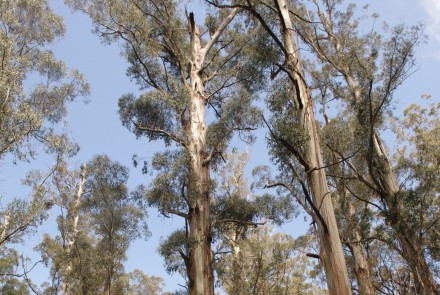Protecting native forests more valuable than logging

New research has found Mountain Ash forests provide more value to the community and the global climate when protected and not logged.
Research scientists at the ANU, in partnership with information and communication technologists at Fujitsu Laboratories in Japan, have used long-term field data from the Central Highlands in Victoria to calculate the social, economic and environmental values of the forests after wildfire and after logging.
“Quantifying natural resources and the services they provide for human wellbeing is important in evaluating land management decisions,” said researcher Dr Heather Keith from the Fenner School of Environment and Society.
Known as ecosystem services, the results show that protecting forests by ending logging could double the amount of carbon stored in the trees.
Avoiding emissions from logging native forests is important to help fight climate change.
These results are being presented at the World Parks Congress in Sydney this week.
“In a harvested forest, the amount of carbon stored in the regrowth forest, plus wood products and landfill, is about half that stored in the protected forest,” Dr Keith said.
“In contrast, only about 10 per cent of the carbon stock in the forest was combusted during the 2009 Victorian bushfires, and most of this will be replaced within a decade in the regrowing forest.”
The results show that natural disasters such as bushfires do not have as great an impact on carbon storage as harvesting the forest.
The research points to the need for land management decisions to be made in partnership with researchers, corporations and the community, to ensure the best economic and environmental outcomes.
A community proposal is to create a Great Forests National Park in the Central Highlands region of Victoria, which will provide a suite of ecosystem services.
Dr Keith said protecting the forests is a long-term investment because it will secure Melbourne‘s domestic water supply catchments, conserve the state’s faunal emblem, the Leadbeater‘s Possum as well as many other species, support the maximum storage of carbon, provide conditions to minimise bushfire severity, and also generate economic activity through eco-tourism.
Fujitsu Laboratories provided support for the research and collaborated on the use of information and communication technology. The partnership is part of Fujitsu’s commitment to help with environmental solutions across the world.
“I am very pleased with this innovative proposal to protect natural forests and animals in Australia utilising our Life Cycle Assessment technologies for biodiversity conservation,” said Fujitsu’s Dr Hirotaka Hara, Head of Social Innovation Laboratories, Fujitsu Laboratories Ltd.
“As we move forward on this collaborative research, we hope to further contribute to biodiversity conservation with Information and Communication Technology.”
Fujitsu undertakes life cycle assessment of their ICT products and services and contributes to biodiversity conservation in their local region as part of the company’s corporate social responsibility role.
The two papers, Evaluation of ecosystem services: the case for protection of the Mountain Ash forests in Victoria and Protecting natural ecosystems is the best form of climate change mitigation in the land sector, will be presented at the World Parks Congress in Sydney.
 Follow
Follow